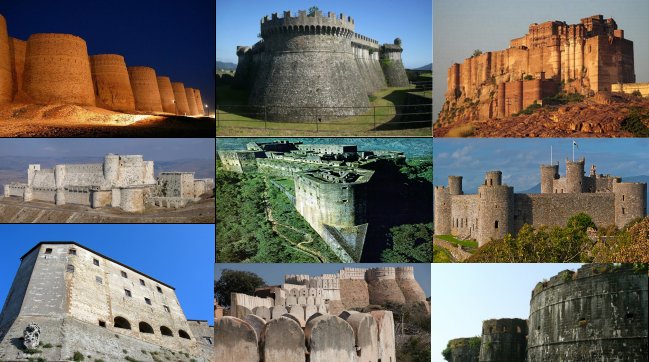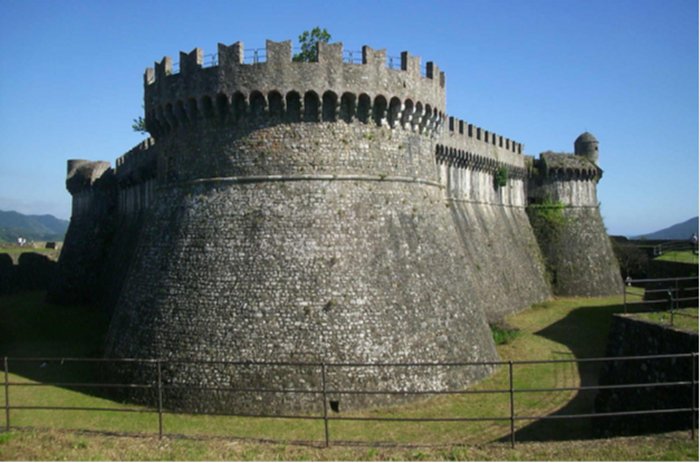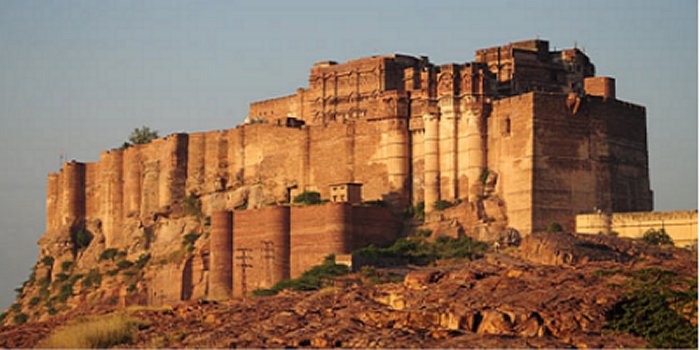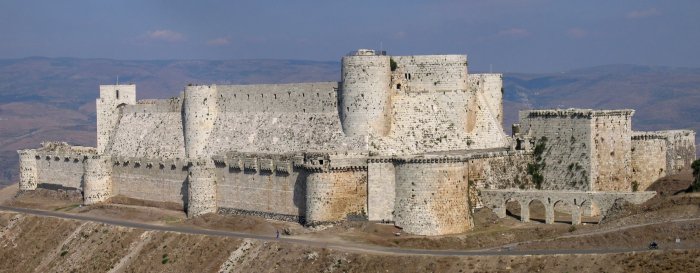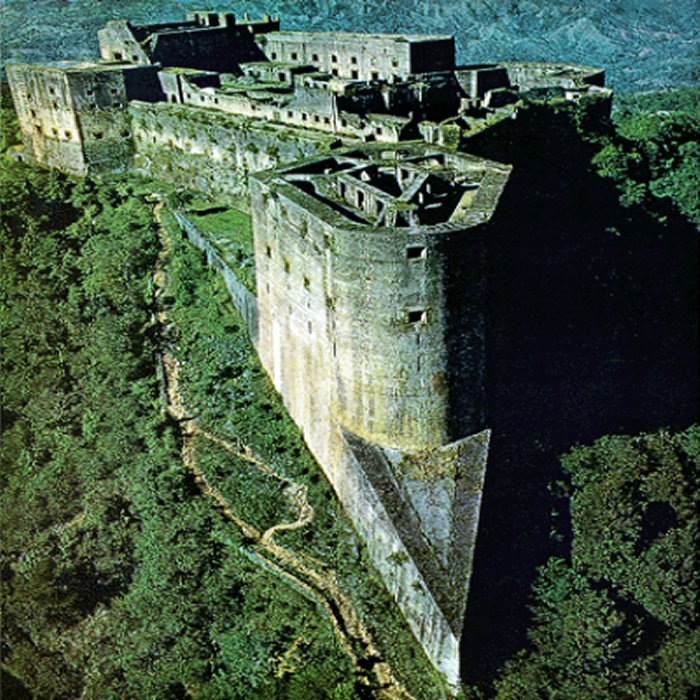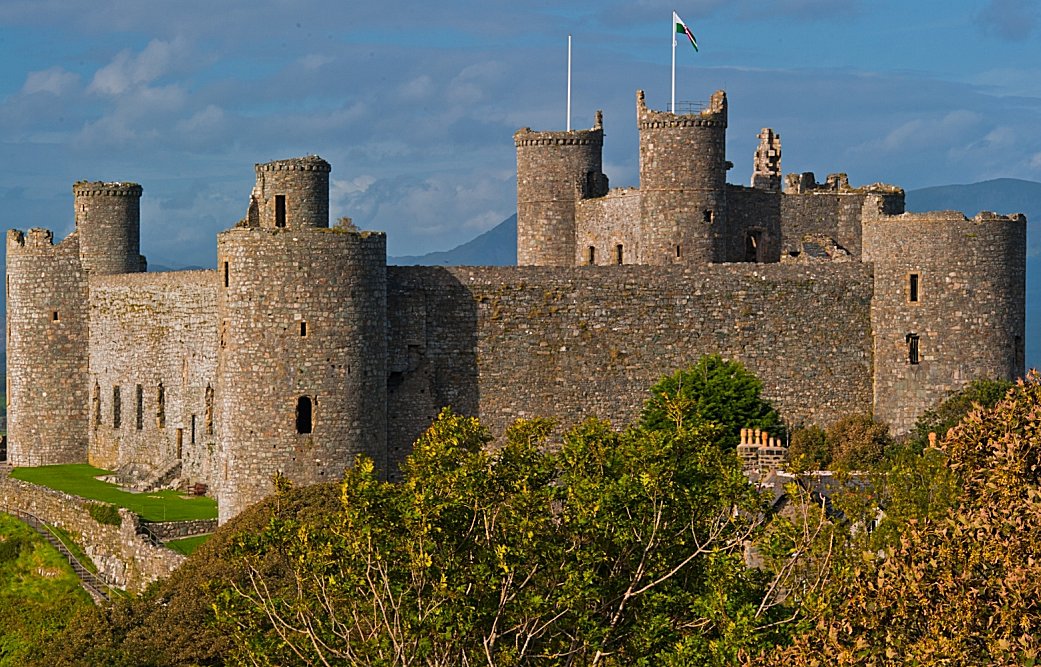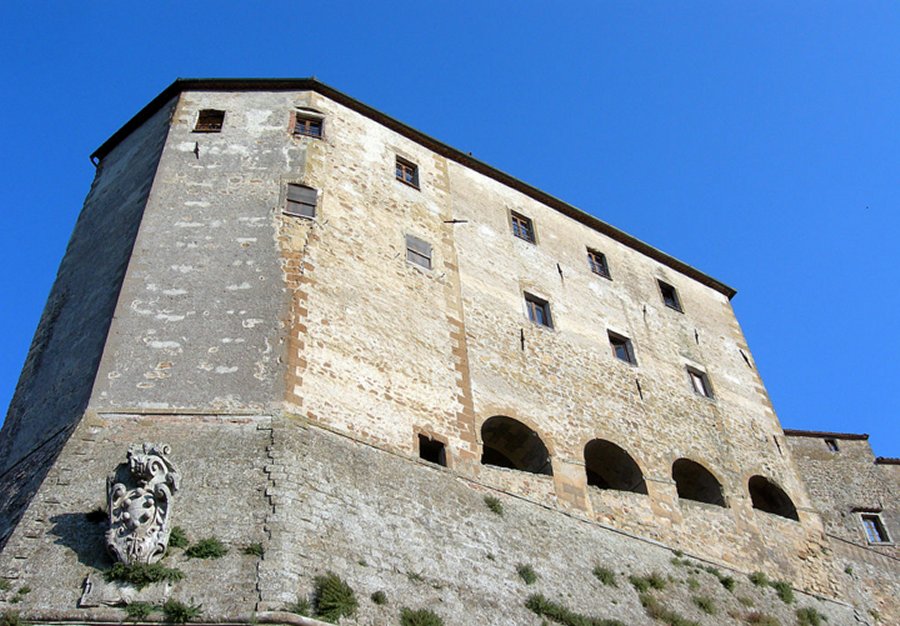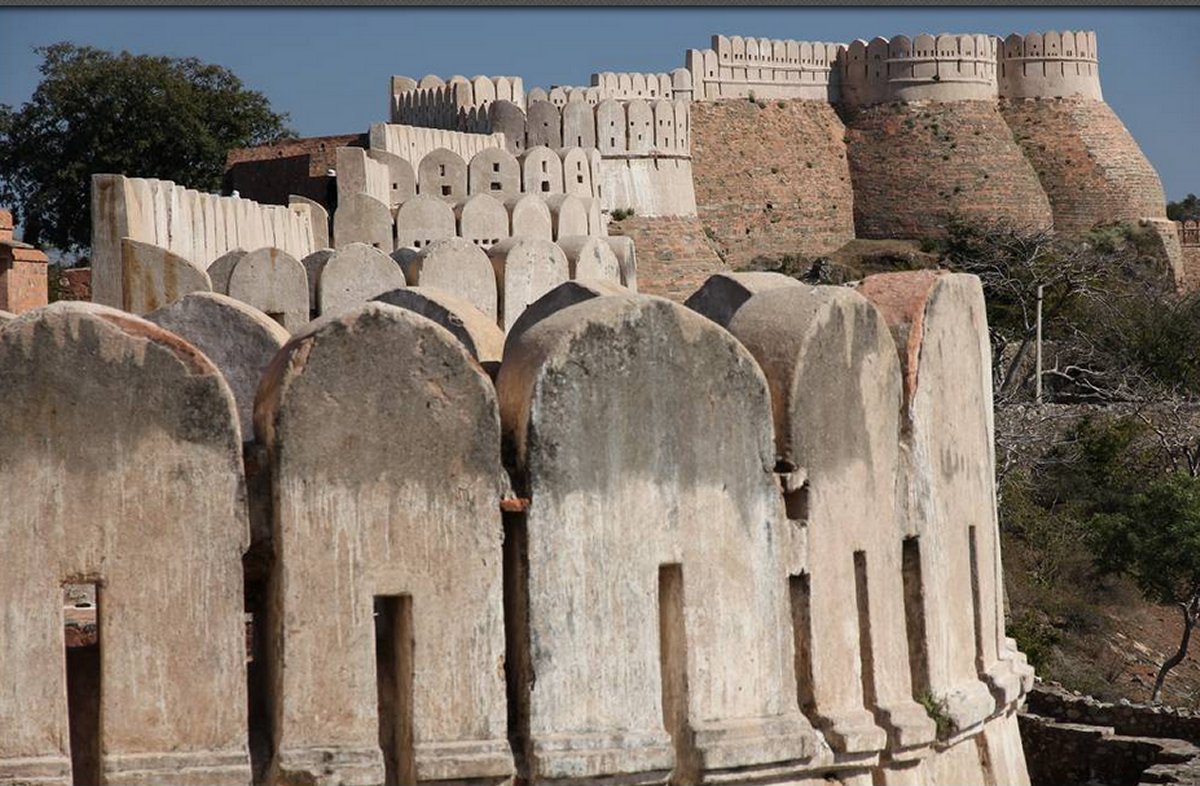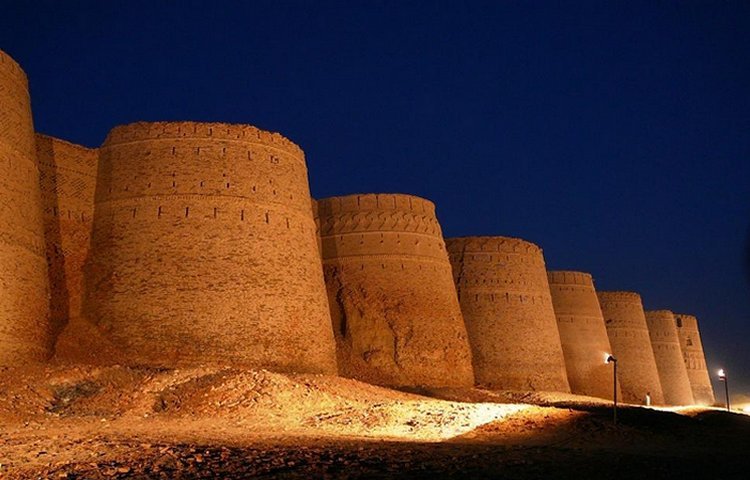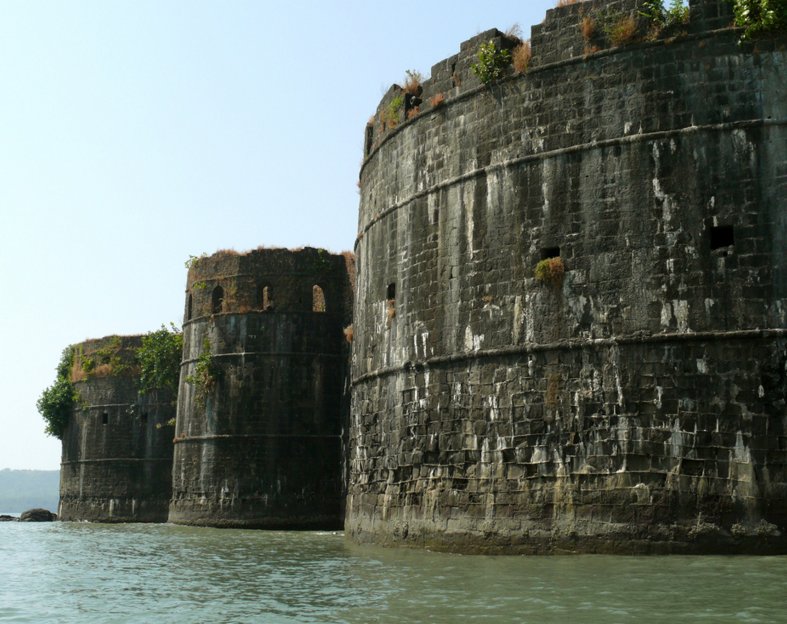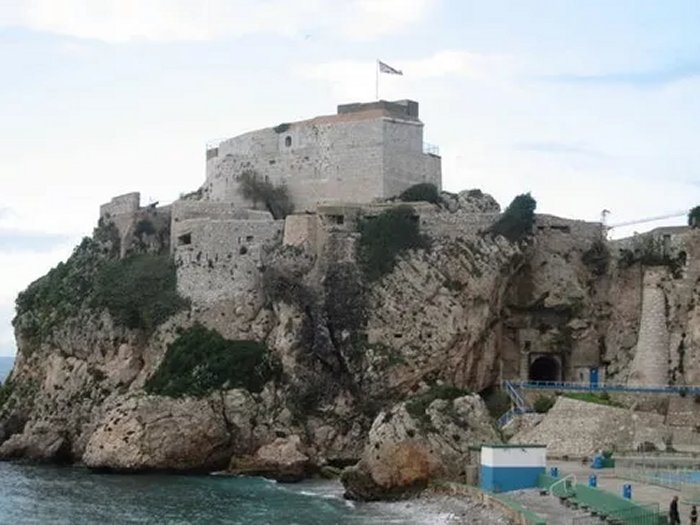10 Ancient Fortresses Of Historical Importance
AncientPages.com - Ancient fortresses are a symbol of royalty, battles, and power. They are the witness to a history spanning hundreds and thousands of years. From very early history to modern times, walls and fortresses have been a necessity for many cities.
In this top list, we take a look at some ancient fortresses of great historical importance.
1. Fortress Sarzanello – Italy
Fortress Sarzanello stands on a hill to the northeast of the city of Sarzana in Italy. The first mention of the city is found in 983 in a diploma of Otto I, also known as Otto the Great, a German king from 936 and Emperor of the Holy Roman Empire from 962 until his death in 973. Sarzana was a strategically important town, possibly of Roman foundation and the fortress was of great military importance in the Middle Ages.
The fortress was designed in order to defend against new firearms. Its triangular shape lent fewer sides to enemy fire. The oblique walls and acute angles also better-averted cannon shots. A fortified central tower inside one of the triangular garrisons housed its commander. Fortress Sarzanello had three meters thick walls, wide moats and the mastermind of the defense in a safe place. This made Sarzanello an unassailable fortress.
The fortress is open to visitors all year round.
2. Mehrangarh Fort – India
The Mehrangarh Fort is also located in the Indian state of Rajasthan in the city of Jodhpur. It was first built in the year 1459 by Rao Jodha, the founder of Jodhpur when he shifted his capital from Mandore. Today it is considered one of the most frequently visited tourist attractions of India.
The Mehrangarh Fort has several gates which observe the many battles fought in ancient times. The structure, enclosed by colossal walls on every side, stands tall on an upright cliff, 400 feet (122m high) above the horizon of Jodhpur. The foundation of this majestic fort was laid down by the Rajput ruler, Rao Jodha in 1459.
There are several palaces within it and offer an imposing view of the city below making it one of the greatest fortresses of the world. The palaces inside the Mehrangarh Fort have an undeniable lure, and the fort, with its exquisiteness, is the finest example of the hard work and skills of the Jodhpuri sculptors. The Mehrangarh Fort also has a museum that exhibits fine galleries and exquisite rooms with an array of lavish royal elephant carriages, palanquins, small canons, thrones, paintings, and even a giant tent. It also has an enthralling lethal weapons gallery. The museum also contains snapshots of the palace interiors.
3. Crac des Chevaliers – Syria
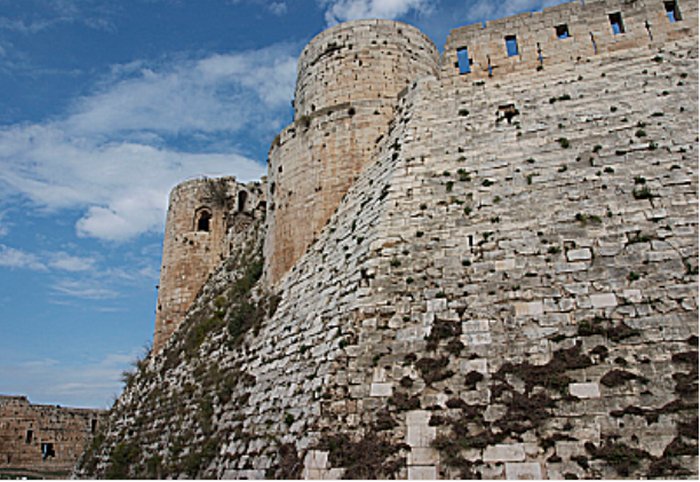
Crac des Chevaliers is a Crusader castle in Syria and one of the most important preserved medieval castles in the world. It was built by the Hospitaller Order of Saint John of Jerusalem from 1142 to 1271.
The site was first inhabited in the 11th century by a settlement of Kurds; as a result, it was known as Hisn al Akrad, meaning the "Castle of the Kurds".
In 1142 it was given by Raymond II, Count of Tripoli, to the Knights Hospitaller. With further construction by the Mamluks in the late 13th century, it ranks among the best-preserved examples of the Crusader castles.
4. Citadelle Laferrière - Haiti
Citadelle Laferrière is a fortress, located on the northern coast of Haiti on the top of mountain Bonnet a L'Eveque. Depicted on local currency, stamps, and postcards, this amazing structure has become the symbol of Haiti's power and independence. It was built in the beginning of the 19th century by one of the leaders of Haiti's slave revolution.
The Citadelle Laferrière is also known simply as the Citadelle or as Citadelle Henri Christophe in the honor of its creator. The Citadelle is referred to by locals as the Eighth Wonder of the World and in 1982 it was nominated as a UNESCO World Heritage Site. This massive stone construction is the largest fortress in the Americas.
5. Harlech Castle - North Wales
Harlech Castle, located in Gwynedd, Merionethshire, North Wales is very famous. It's a very impressive, concentric castle complex with drawbridges that could stand much!
The building of Harlech Castle started in May 1283 and was completed in 1290.
In 1461 the castle was held against siege by Lancastrian forces, during the War of the Roses, under the Constable of the castle, Dafydd ap Ieuan. The siege is said to have been held for seven years by the famous, stubborn "Men of Harlech" who were immortalized in the famous Welsh song.
The Harlech garrison held out, despite often only being manned by a skeleton force long after other Lancastrian commanders in Wales had already surrendered. It was the longest siege in British history.
In 1468 famine eventually forced their surrender to Lord Herbert under honorable terms.
Harlech has several gatehouses and several outer walls and outer baileys were often added. Its walls were higher, thicker and stronger and the inner walls were higher than outer walls.
6. Fortress of the Orsini - Italy
Fortress of the Orsini was built by Pope Nicholas III Orsini. It stands on the drop of a cliff and it is a masterpiece of architectural acrobatics. It was originally constructed in the 14th century and then completely renovated in 1552. It has five underground levels with subterranean passages and is, without doubt, one of the most remarkable examples of military architecture of the Italian renaissance period.
It's also one of the most important and self-sufficient strongholds of Toscany. It had cisterns to collect rainwater, could produce energy from wind and mill-wheels worked grains and saltpeter, the first to feed the soldiers and the second to obtain the powders needed to manufacture ammunition. This mighty fortress could also provide refuge for all the inhabitants of the city of Sorano.
Fortress of the Orsini was able to withstand infinite sieges (Siena for four years, in 1400, tried to break its resistance in vain.
7. Kumbhalgarh Fort - India
The Kumbhalgarh Fort is located in Rajasthan in western India. It is a World Heritage Site that was originally built in the 15th century by Rana Kumbha, ruler of Mewar between 1433 and 1468 AD. The ancient fort was later enlarged in the 19th century. Surrounded by thirteen elevated mountain peaks, the wall extends over 36 Kilometers around the perimeter of the fort and varies in width from 15 to 25 feet.
It consists of thousands of beautiful stone bricks and decorations along the top. During times of danger, the fort provided refuge for the rulers of Mewar. Read more
8. Derawar Fort, Bahawalpur - Pakistan
The enormous and impressive structure of Derawar Fort is located at the edge of the Cholistan desert. It’s a famed hallmark of Bahawalpur, the eleventh largest city in Pakistan and the capital of Bahawalpur District.
The whole area around Derawar was once well watered by the river Ghaggar, now called the Hakara in Pakistan, and known in ancient Vedic times as the Sarasvati. The fort was built by Hindu Rajput, Bhati of Jaisalmer. The fort is more impressive from the outside and supported by 39 enormous buttresses, with four on each corner, nine on three sides including West, South, and North, and eight on the eastern side. The Punjab Archaeology Department says there has been a fort at Derawar for nearly 5,000 years to protect the trade route from central Asia to the subcontinent.
9. Murud-Janjira – India
It is one of the strongest marine forts in India. Murud-Janjira is the local name for a fort situated at the coastal village of Murud, in the Raigad district of Maharashtra, India.
Murud-Janjira Fort is situated on an oval-shaped rock off the Arabian Sea coast near the port town of Murud, 165 km (103 mi) south of Mumbai (also known as Bombay).
It is famous for being the only fort along India's western coast that remained undefeated despite Maratha, Dutch, and English East India Company attacks. The only possible approach to the fortress is through the sea.
The main gate is visible when well within the fort’s reach with another gate in the rear for an escape to the sea in case of emergency. The structure was first built in the 15th century and to this day has its 19 rounded bastions intact.
10. Rock of Gibraltar
The fortifications of Gibraltar have made the Rock of Gibraltar and its environs "probably the most fought over and most densely fortified place in Europe, and probably, therefore, in the world. The British soon realized this place was of strategic importance. Taking advantage of the geography, they constructed one of the most famous fortified positions for its time, expanding upon existing Moorish and Spanish constructions.
The eastern face of the Rock of Gibraltar is a sheer cliff face, while the western slope is comparatively less steep but still a formidable proposition for an invader. Hundreds of tunnels were carved into the rock and used for communication, storage, maneuvers, and cannons. Various batteries and walls were also constructed. The forts' biggest triumph came during the Great Siege when the garrison held on for three and a half years and suffered only 333 deaths as a result of military action.
Copyright © AncientPages.com All rights reserved. This material may not be published, broadcast, rewritten or redistributed in whole or part without the express written permission of AncientPages.com
Expand for referencesMore From Ancient Pages
-
 Sailing With The Phoenicians: Great Traders, Sailors And Navigators
News | Sep 6, 2015
Sailing With The Phoenicians: Great Traders, Sailors And Navigators
News | Sep 6, 2015 -
 The Olmecs – Who They Were, Where They Came From Still Remains A Mystery
Civilizations | Feb 19, 2015
The Olmecs – Who They Were, Where They Came From Still Remains A Mystery
Civilizations | Feb 19, 2015 -
 Hidden Connection Between The Zodiac, Ancient Egypt, Freemasonry And Christianity
Egyptian Mythology | Aug 14, 2018
Hidden Connection Between The Zodiac, Ancient Egypt, Freemasonry And Christianity
Egyptian Mythology | Aug 14, 2018 -
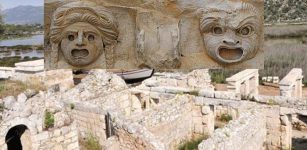 Ancient City Was Discovered Underground In Antalya’s Demre District
Archaeology | Nov 26, 2019
Ancient City Was Discovered Underground In Antalya’s Demre District
Archaeology | Nov 26, 2019 -
 Hundreds Of Rock Paintings Found In Tanzania By Polish Archaeologist
Archaeology | Jul 11, 2018
Hundreds Of Rock Paintings Found In Tanzania By Polish Archaeologist
Archaeology | Jul 11, 2018 -
 Rene Descartes – Independent French Thinker And His Main Ideas
Featured Stories | Apr 27, 2021
Rene Descartes – Independent French Thinker And His Main Ideas
Featured Stories | Apr 27, 2021 -
 Is ‘Someone’ Regularly Altering The Course Of History? – Unexplained Events – Part 2
Featured Stories | Dec 3, 2020
Is ‘Someone’ Regularly Altering The Course Of History? – Unexplained Events – Part 2
Featured Stories | Dec 3, 2020 -
 How Did 20th-Century Philosophers Explain Ghosts And Other Spooky Subjects?
Featured Stories | Nov 8, 2024
How Did 20th-Century Philosophers Explain Ghosts And Other Spooky Subjects?
Featured Stories | Nov 8, 2024 -
 Rare Medieval Tattoo Depicting A Christogram Unearthed In Ghazali, Sudan
Archaeology | Nov 9, 2023
Rare Medieval Tattoo Depicting A Christogram Unearthed In Ghazali, Sudan
Archaeology | Nov 9, 2023 -
 2,250-Year-Old Iron Age Settlement Discovered Near Upton-Upon-Severn
Archaeology | Jan 4, 2022
2,250-Year-Old Iron Age Settlement Discovered Near Upton-Upon-Severn
Archaeology | Jan 4, 2022 -
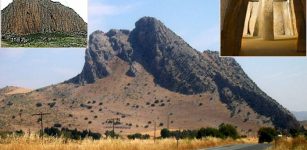 Mysterious Menga Dolmen: A New Very Old Monument Discovered
Archaeology | Sep 21, 2020
Mysterious Menga Dolmen: A New Very Old Monument Discovered
Archaeology | Sep 21, 2020 -
 Ancient Village Of Zalipie Where Flowers Are Painted On All Houses
Ancient Traditions And Customs | May 29, 2019
Ancient Village Of Zalipie Where Flowers Are Painted On All Houses
Ancient Traditions And Customs | May 29, 2019 -
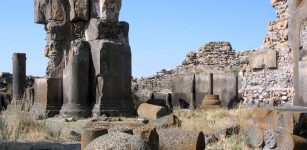 Ancient Great City Of Ani: Lost Capital Of The Kingdom Of Armenia And Its Mysterious Underground Tunnels
Featured Stories | Feb 18, 2016
Ancient Great City Of Ani: Lost Capital Of The Kingdom Of Armenia And Its Mysterious Underground Tunnels
Featured Stories | Feb 18, 2016 -
 Jambu Tree In Great Cosmogonic Forest Of Sacred Land Of Jambudvipa In Buddhist Mythology
Featured Stories | Nov 2, 2021
Jambu Tree In Great Cosmogonic Forest Of Sacred Land Of Jambudvipa In Buddhist Mythology
Featured Stories | Nov 2, 2021 -
 Mystery Of The Minoan Blue Monkeys Depicted In Frescoes
Archaeology | Apr 16, 2020
Mystery Of The Minoan Blue Monkeys Depicted In Frescoes
Archaeology | Apr 16, 2020 -
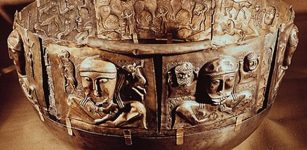 Gundestrup Cauldron: Great Gilded Silver Vessel Decorated With Scenes Derived From Celtic Mythology
Artifacts | May 30, 2016
Gundestrup Cauldron: Great Gilded Silver Vessel Decorated With Scenes Derived From Celtic Mythology
Artifacts | May 30, 2016 -
 Kofun: Megalithic Keyhole-Shaped Tombs That Belonged To High Status People In Japan
Civilizations | Oct 31, 2018
Kofun: Megalithic Keyhole-Shaped Tombs That Belonged To High Status People In Japan
Civilizations | Oct 31, 2018 -
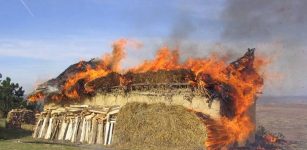 Mysterious Cucuteni-Tyrpillian Culture Burned Their Settlements For Unknown Reasons
Civilizations | Feb 12, 2021
Mysterious Cucuteni-Tyrpillian Culture Burned Their Settlements For Unknown Reasons
Civilizations | Feb 12, 2021 -
 Selinunte: Latest Excavations Bring To Light A New Small Temple – What Ritualistic Practices Will Be Revealed One Day?
Archaeology | Aug 12, 2024
Selinunte: Latest Excavations Bring To Light A New Small Temple – What Ritualistic Practices Will Be Revealed One Day?
Archaeology | Aug 12, 2024 -
 Mysterious Sherbrooke Stones – Did Africans Visit North America 2,500 Years Ago?
Artifacts | Nov 23, 2017
Mysterious Sherbrooke Stones – Did Africans Visit North America 2,500 Years Ago?
Artifacts | Nov 23, 2017

